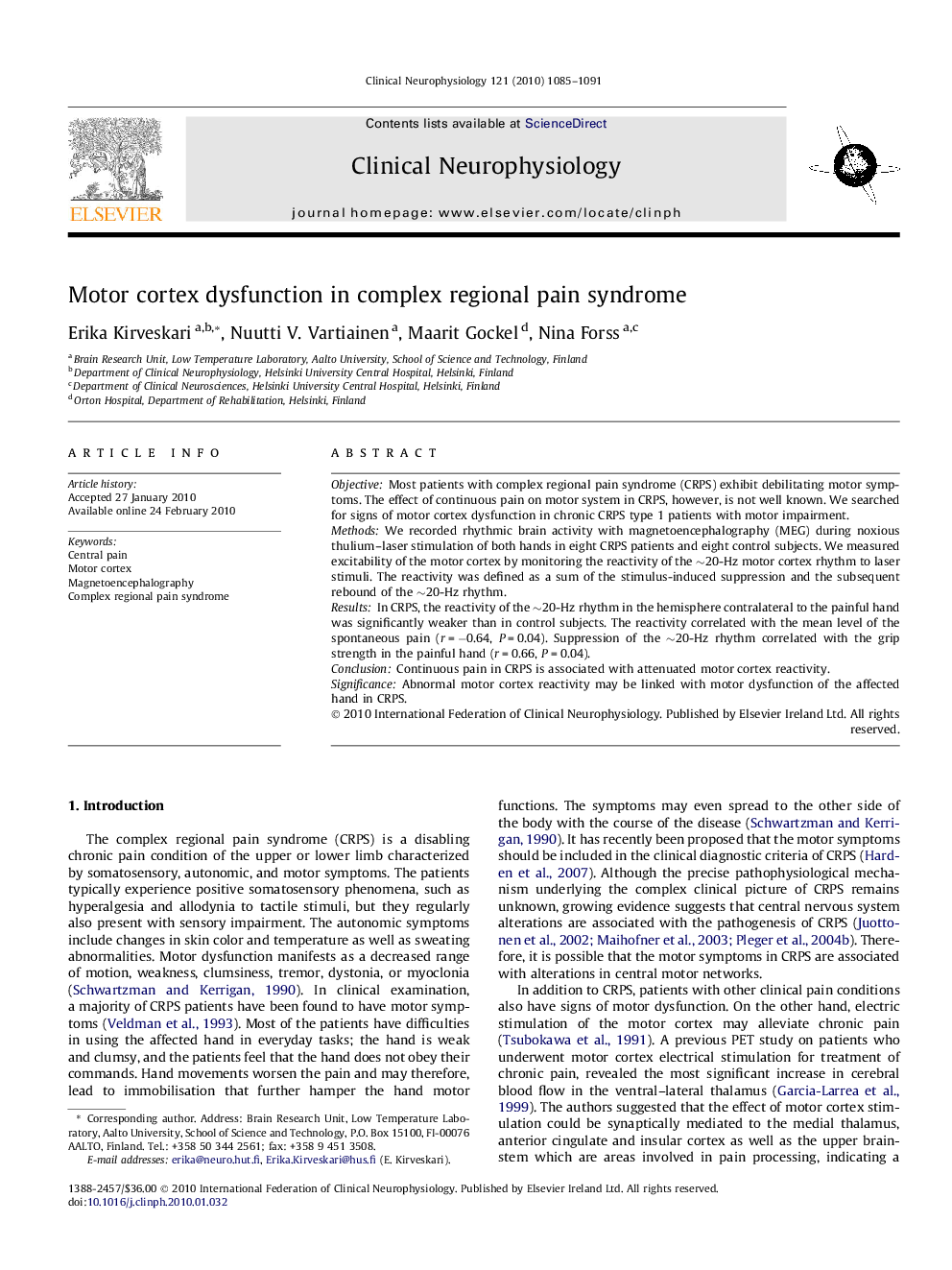| Article ID | Journal | Published Year | Pages | File Type |
|---|---|---|---|---|
| 3045933 | Clinical Neurophysiology | 2010 | 7 Pages |
ObjectiveMost patients with complex regional pain syndrome (CRPS) exhibit debilitating motor symptoms. The effect of continuous pain on motor system in CRPS, however, is not well known. We searched for signs of motor cortex dysfunction in chronic CRPS type 1 patients with motor impairment.MethodsWe recorded rhythmic brain activity with magnetoencephalography (MEG) during noxious thulium–laser stimulation of both hands in eight CRPS patients and eight control subjects. We measured excitability of the motor cortex by monitoring the reactivity of the ∼20-Hz motor cortex rhythm to laser stimuli. The reactivity was defined as a sum of the stimulus-induced suppression and the subsequent rebound of the ∼20-Hz rhythm.ResultsIn CRPS, the reactivity of the ∼20-Hz rhythm in the hemisphere contralateral to the painful hand was significantly weaker than in control subjects. The reactivity correlated with the mean level of the spontaneous pain (r = −0.64, P = 0.04). Suppression of the ∼20-Hz rhythm correlated with the grip strength in the painful hand (r = 0.66, P = 0.04).ConclusionContinuous pain in CRPS is associated with attenuated motor cortex reactivity.SignificanceAbnormal motor cortex reactivity may be linked with motor dysfunction of the affected hand in CRPS.
